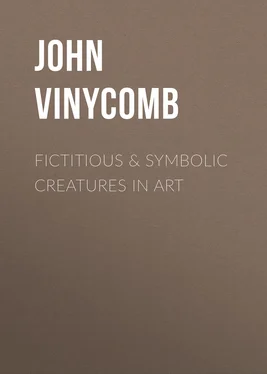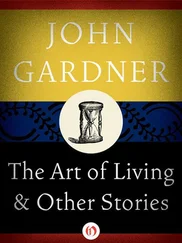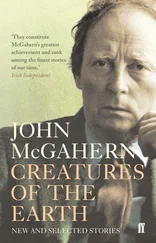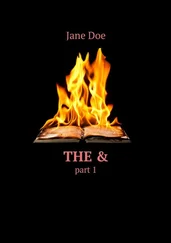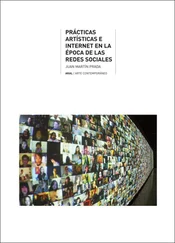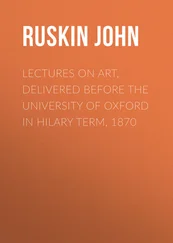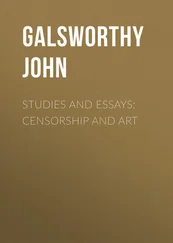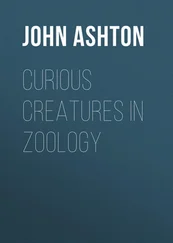John Vinycomb - Fictitious & Symbolic Creatures in Art
Здесь есть возможность читать онлайн «John Vinycomb - Fictitious & Symbolic Creatures in Art» — ознакомительный отрывок электронной книги совершенно бесплатно, а после прочтения отрывка купить полную версию. В некоторых случаях можно слушать аудио, скачать через торрент в формате fb2 и присутствует краткое содержание. Жанр: foreign_antique, foreign_home, visual_arts, на английском языке. Описание произведения, (предисловие) а так же отзывы посетителей доступны на портале библиотеки ЛибКат.
- Название:Fictitious & Symbolic Creatures in Art
- Автор:
- Жанр:
- Год:неизвестен
- ISBN:нет данных
- Рейтинг книги:3 / 5. Голосов: 1
-
Избранное:Добавить в избранное
- Отзывы:
-
Ваша оценка:
- 60
- 1
- 2
- 3
- 4
- 5
Fictitious & Symbolic Creatures in Art: краткое содержание, описание и аннотация
Предлагаем к чтению аннотацию, описание, краткое содержание или предисловие (зависит от того, что написал сам автор книги «Fictitious & Symbolic Creatures in Art»). Если вы не нашли необходимую информацию о книге — напишите в комментариях, мы постараемся отыскать её.
Fictitious & Symbolic Creatures in Art — читать онлайн ознакомительный отрывок
Ниже представлен текст книги, разбитый по страницам. Система сохранения места последней прочитанной страницы, позволяет с удобством читать онлайн бесплатно книгу «Fictitious & Symbolic Creatures in Art», без необходимости каждый раз заново искать на чём Вы остановились. Поставьте закладку, и сможете в любой момент перейти на страницу, на которой закончили чтение.
Интервал:
Закладка:
Celestial Beings
“ They boast ethereal vigour and are form’d
From seeds of heavenly birth. ”—Virgil.
“ Down hither prone in flight
He speeds, and through the vast ethereal sky
Sails between world and world with steady wings:
Now on the polar wind, then with quick fan
Winnows the buxom air. ”—Milton.
Angels and Archangels the mind loves to contemplate as the ministers of God’s omnipotence and beneficence, and delights in believing these celestial beings to be endowed with a higher and purer intelligence, and as being nearer to the divine nature. In all ages civilised man has thought of them and represented them in art as of form like to his own, and with attributes of volition and power suggested by wings. Scripture itself justifies the similitude; the Almighty is sublimely represented as “walking upon the wings of the wind.” Wings have always been the symbol or attribute of volition , of mind , or of the spirit or air . No apter emblem could be found for a rapid and resistless element than birds or the wings of birds; and however incongruous such appendages may be, and anatomically impossible, it is figuratively as the messengers of God’s will to man that we have come to view these celestial habitants.
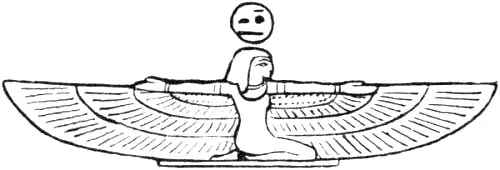
Egyptian Winged Deity.
The idea of adding wings to the human form has existed from remote antiquity, and for the earliest suggestion of celestial beings of the winged human type we must look to the art works of Egypt and Assyria. In Egyptian art, Neith, the goddess of the heavens, was sometimes represented with wings, and in the marbles of Nineveh we find human figures displaying four wings. 3 3 See Audsley’s “Glossary of Architecture,” “Angel,” p. 101.
In classic art wings are given to certain divinities and genii. The Jews probably borrowed the idea from the Egyptians, and the early Christians adopted—in this as in many other instances—existing ideas in their symbolical art to express the attribute of swiftness and power, and the sanction of the practice doubtless fixed it for acceptance through all future epochs of Christian Art.
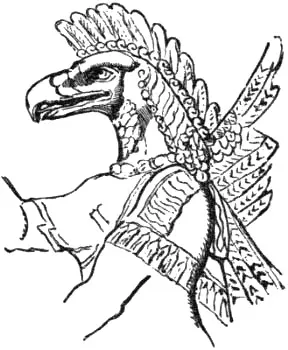
Hawk-headed and winged figure, emblem of Osiris, which, having of all birds the most piercing eye and the most rapid flight, serves to express the divine intelligence and activity.
(Palace of Nimrod in the Louvre.)
In holy writ and Jewish tradition angels are usually spoken of as men, and their wings appear to be implied rather than expressed, as when Abraham in the plains of Mamré addresses his celestial visitors as “my lord,” when Jacob wrestles with the angel, and more particularly when the Angel at the Sepulchre is described by St. Matthew, “His countenance was like the lightning and his raiment white as snow,” and by St. Mark as “A young man clothed in a long white garment.”
The Seraphim and Cherubim as winged beings are more perfectly described in the Scriptures.
The Wings Variously Coloured. —Not content with a simple departure in form from all natural wings, the early and Middle Age artists resorted to many expedients to invest their angels’ wings with unearthly characteristics. Colour was a fertile field for their ingenuity, and they lavished all their brilliant hues in accentuating or separating the several orders of feathers comprising the wings; now rivalling the rainbow, now applying the startling contrasts of the most gorgeous tropical butterfly; at other times sprinkling or tipping the richly painted feathers with burnished gold, or making them appear alive with brilliant eyes.
Vesture. —In Early Christian Art the white vesture spoken of by St. Matthew and St. John, almost invariably adopted, consisted of garments resembling the classic tunica and pallium, sometimes bound with the “golden girdle” of Revelation. During the mediæval period they were clad in every brilliant colour. Angels do not often appear in the works of art executed during the first six centuries of the Church; and previous to the fifth century they were invariably represented without the nimbus—that attribute of divinity with which they were almost always invested throughout the whole range of Middle Age art.
Nimbus. —The nimbi given to all the orders of the angelic hierarchy are circular in form, with their fields either plain or covered with numerous radiating lines or rays, sometimes with broad borders of ornament, but never with the tri-radiate form, which was specially reserved for the persons of the trinity.
Lord Bacon (“Advancement of Learning,” Book i.) says we find, as far as credit is to be given to the ecclesiastical hierarchy of the supposed Dionysius, the Senator of Athens, that the first place or degree is given to the angels of love, which are termed Seraphim ; the second to the angels of light, which are termed Cherubim ; and the third, and so following places, to thrones, principalities, and the rest, which are all angels of power and ministry, so that the angels of knowledge and illumination are placed before the angels of office and domination.
Fallen Angels. —We learn from Tradition that many angels, originally holy like the rest, fell from their pristine purity, becoming so transformed in character that all their powers are now used for the purpose of doing evil instead of doing good. These are to be identified with the devils so frequently mentioned in holy writ. By the artists of the Middle Ages they are depicted in as hideous a manner as could be conceived, more generally of the Satyr form with horns and hoofs and tail, which last connects them with the Dragon of the Apocalypse, the impersonation of the Supreme Spirit of evil ( see Dragon). In Milton’s conception Satan—the fallen Angel—assumes noble and magnificent proportions.
Mistaken Modern Conception of Angels
Many poets and artists of modern times appear to have lost sight of the traditions of sacred art, and in their endeavours to spiritualise the character of angelic beings have in this respect been led to portray them as altogether feminine in form and appearance. This error should be carefully avoided, because in a spiritual as well as in a human sense the vigorous active principle they represent, besides having the warrant of Scripture, is more fitly represented by man than by woman.
Mahomet, who borrowed his ideas mostly from the Christians, in this instance, possibly to guard his followers from some latent form of idolatry, said of angels with some show of reason, that “they were too pure in nature to admit of sex,” but to meet the ideas of his followers he invented another race of celestial beings for the delight and solace of the faithful in the paradise to which he lured them.
Ministering Spirits or Guardian Angels. —These form a frequent theme of poets and artists. The idea was apparently evolved from the mention of “ministering spirits” before the throne of God in holy writ, and from the ecclesiastical legends and traditions of the Christian mythology of early date, derived from still earlier sources. Thus Milton speaks of—
“one of the Seven
Who in God’s presence, nearest to the throne
Stand ready at command, and are his eyes
That run thro’ all the heavens, and down to earth
Bear his swift errands.”
Интервал:
Закладка:
Похожие книги на «Fictitious & Symbolic Creatures in Art»
Представляем Вашему вниманию похожие книги на «Fictitious & Symbolic Creatures in Art» списком для выбора. Мы отобрали схожую по названию и смыслу литературу в надежде предоставить читателям больше вариантов отыскать новые, интересные, ещё непрочитанные произведения.
Обсуждение, отзывы о книге «Fictitious & Symbolic Creatures in Art» и просто собственные мнения читателей. Оставьте ваши комментарии, напишите, что Вы думаете о произведении, его смысле или главных героях. Укажите что конкретно понравилось, а что нет, и почему Вы так считаете.
